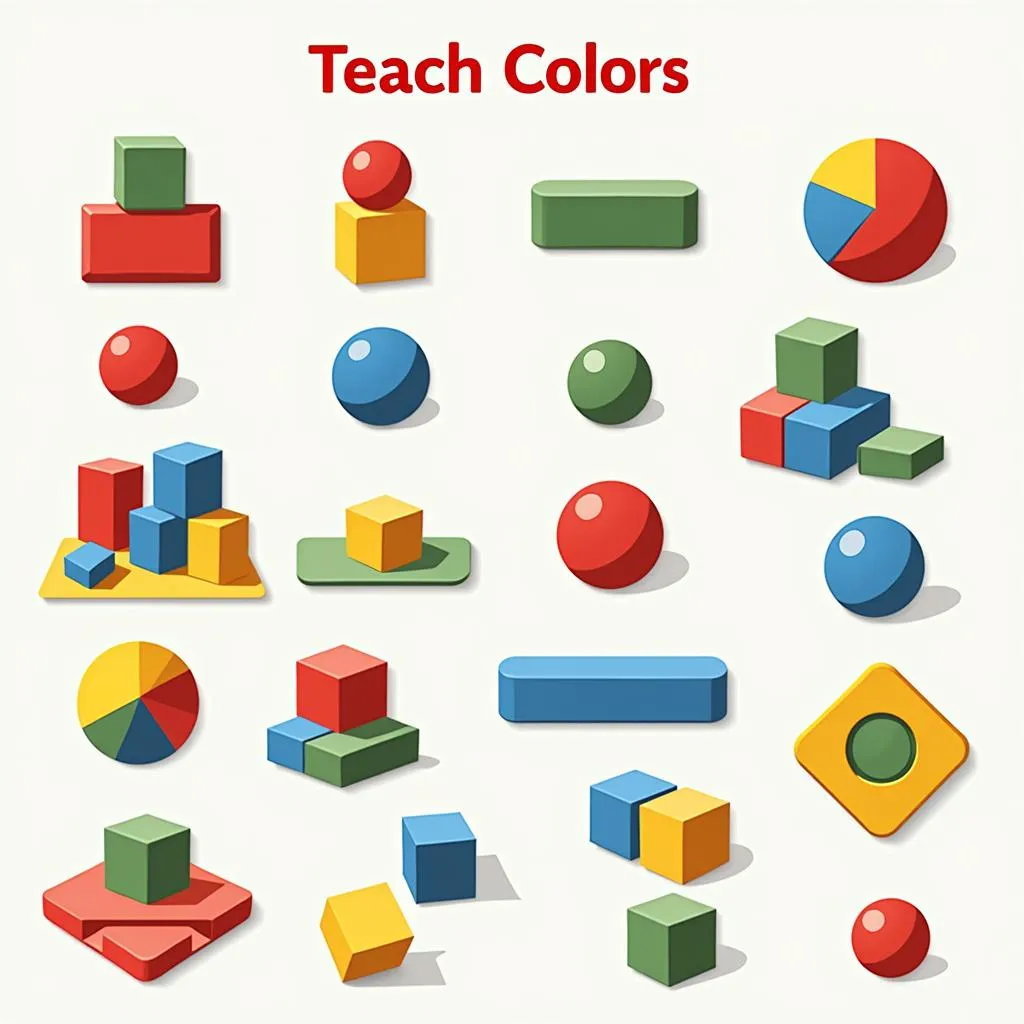Teaching colors to preschoolers can be a fun and engaging experience that lays the foundation for future learning. With a little creativity and patience, you can transform color learning into a memorable and enjoyable journey for young minds. This guide offers practical tips and activities for introducing colors to preschoolers effectively.
Start with the Basics: Primary Colors
Begin by introducing the three primary colors: red, blue, and yellow. These are the building blocks of all other colors. You can use colorful objects, pictures, or even paint to help children recognize and name these basic colors.
“Understanding primary colors is crucial for developing a strong understanding of color theory,” says Ms. Evelyn Carter, a veteran preschool teacher with over 20 years of experience. “By focusing on these foundational colors, you create a solid base for introducing more complex color concepts later on.”
Use Sensory Activities
Engage all senses in your color lessons! Let children touch, feel, smell, and taste different items associated with specific colors. For example, you could have children touch red apples, smell blue blueberries, and taste yellow bananas.
Songs and Rhymes
Introduce color-related songs and rhymes to make learning fun and memorable. Simple songs like “Red and Yellow, Red and Yellow” or “The Colors of the Rainbow” can help children learn colors in a fun and engaging way.
Exploring Secondary and Tertiary Colors
Once children are familiar with primary colors, you can introduce secondary and tertiary colors. Secondary colors are created by mixing two primary colors, while tertiary colors are created by mixing a primary color with a neighboring secondary color.
Color Mixing Activities
Encourage children to experiment with color mixing through painting, playdough, or even simple water play. This hands-on experience helps children understand how different colors are created and fosters their creativity.
Color Sorting Activities
Provide children with a variety of colored objects and ask them to sort them by color. This activity helps children develop their color recognition and classification skills.
Color Games and Activities
Make color learning fun with engaging games and activities. Here are a few ideas:
- Color Hunt: Hide colorful objects around the classroom and ask children to find them.
- Color Bingo: Create a Bingo board with different colors and call out colors for children to mark off.
- Color Matching Game: Provide children with cards or pictures showing different colored objects and ask them to match the cards with the corresponding color.
Real-Life Applications
Connect color learning to real-life situations. Talk about colors you see in nature, clothing, food, and toys. You can even ask children to identify colors in their surroundings during outdoor activities.
“Connecting color learning to everyday experiences is crucial for reinforcing concepts,” explains Mr. David Jones, a certified early childhood educator. “When children see colors in their environment, they understand their relevance and importance.”
Color Books and Resources
There are many books and resources available to help children learn about colors. Some popular options include:
- The Very Hungry Caterpillar by Eric Carle
- Brown Bear, Brown Bear, What Do You See? by Bill Martin Jr. and Eric Carle
- Color Zoo by Lois Lehert
These books use colorful illustrations and engaging stories to introduce colors to young children.
Conclusion
Teaching colors to preschoolers is a rewarding experience that lays the foundation for their understanding of the world. By using a combination of sensory activities, songs, games, and real-life connections, you can make color learning fun, engaging, and memorable for young children.
FAQ
Q: What are the best ways to teach colors to children with different learning styles?
A: Use a variety of methods to cater to different learning styles. Visual learners can benefit from colorful pictures and videos, while auditory learners can enjoy color-related songs and rhymes. Kinesthetic learners can learn through hands-on activities like color mixing and sorting.
Q: How can I help children remember color names?
A: Repetition is key! Repeat color names frequently throughout the day and encourage children to use them in their conversations. Use visual aids like flashcards or charts to reinforce color recognition.
Q: How can I make color learning more interactive?
A: Involve children in creating their own color books or artwork. Ask them to identify colors in their favorite stories or songs. Encourage them to share their knowledge of colors with others.
Q: How long should I spend teaching colors each day?
A: There is no set time limit. You can incorporate color learning into a variety of activities throughout the day. Aim for short, engaging sessions to keep children motivated and interested.
Q: Where can I find more resources for teaching colors to preschoolers?
A: You can find a wealth of resources online, including printable coloring pages, craft ideas, and interactive games. Your local library also has a variety of books and materials on color learning.
 Colorful toys for teaching preschoolers colors
Colorful toys for teaching preschoolers colors
Let us help you bring color into your life!
For a free consultation and personalized color advice, please contact us at:
Phone: +1 (555) 555-5555
Email: [email protected]
Address: 86 Cầu Giấy, Hà Nội
We are passionate about creating vibrant and inspiring spaces that bring joy to our clients.
